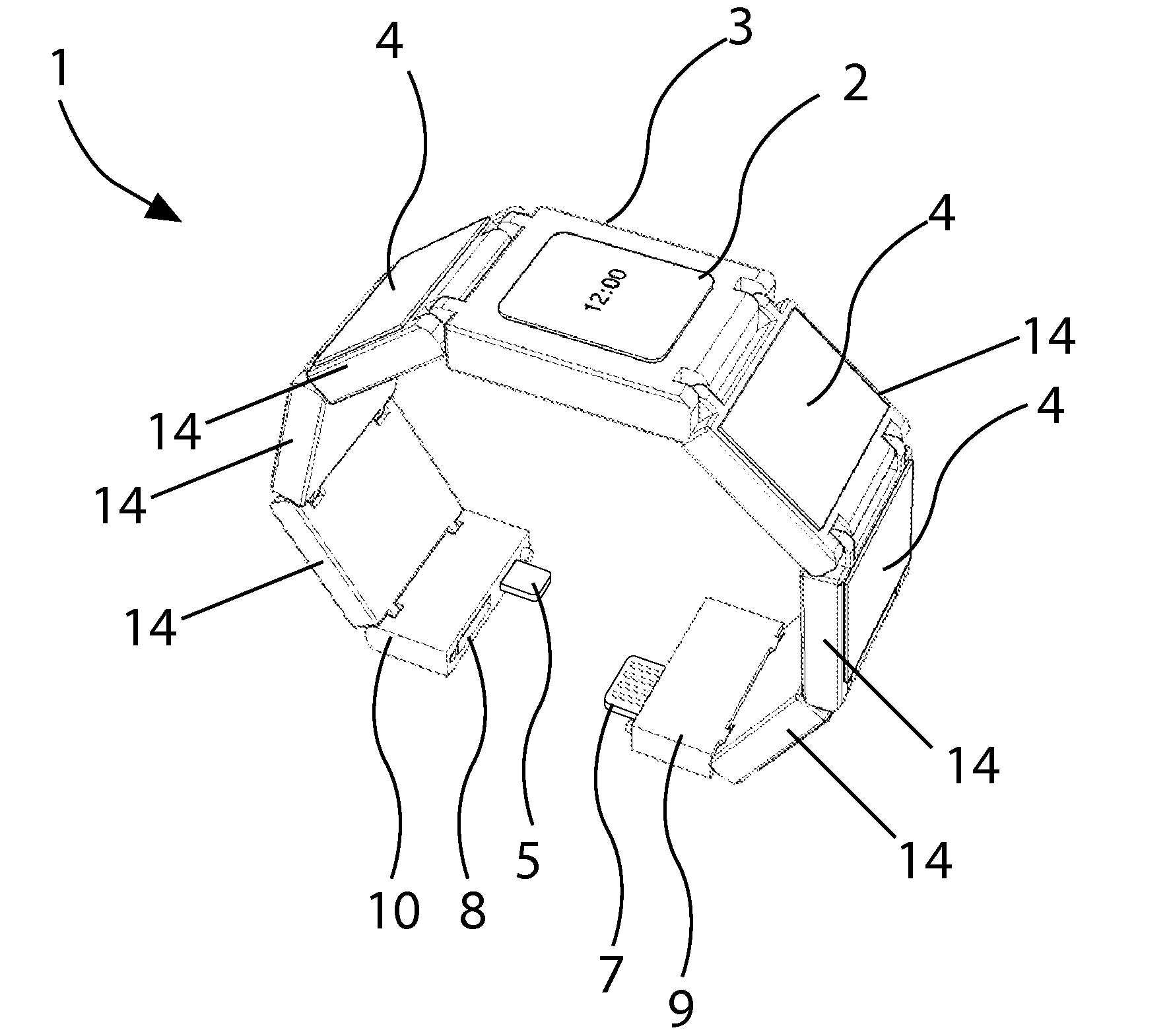Flexible Wrist-Worn Recharging Device
a rechargeable device and wrist-worn technology, applied in the direction of electric winding, instruments, horology, etc., can solve the problems of minor inconvenience, unable to recharge, and render useless, so as to maximize solar exposure, increase power supply, and maximize the potential surface area exposure to the sun and electricity generation potential
- Summary
- Abstract
- Description
- Claims
- Application Information
AI Technical Summary
Benefits of technology
Problems solved by technology
Method used
Image
Examples
Embodiment Construction
Integrating with Smart-Watch[0053]20. Inductive Charging Surface
DETAILED DESCRIPTION
[0054]Mobile Electronic Devices, including smart-phones, require a minimum of 500 mA and stable 5V before accepting charge current. Therefore (0.5 A×5V=2.5 W) a 2.5 W power source is required to charge smart-phones. Many 3.7V-4.2V batteries can provide a stable 5V output when wired to a DC voltage regulator. However, the battery must be capable of providing a minimum output rate of 500 mA. The preferred embodiment of the invention incorporates battery size specifications of a supplementing Battery-Bank in accordance with such needs.
[0055]Battery selection may be driven not only by voltage and capacity, but also by charge / recharge rate specifications. If the battery has a capacity of less than 500 mAh, then it must have a discharge rating or C-rate of higher than 1 if the target battery, or the battery to be recharged, requires a minimum of 500 mA for a recharge operation.
[0056]It will be appreciated ...
PUM
 Login to View More
Login to View More Abstract
Description
Claims
Application Information
 Login to View More
Login to View More - R&D
- Intellectual Property
- Life Sciences
- Materials
- Tech Scout
- Unparalleled Data Quality
- Higher Quality Content
- 60% Fewer Hallucinations
Browse by: Latest US Patents, China's latest patents, Technical Efficacy Thesaurus, Application Domain, Technology Topic, Popular Technical Reports.
© 2025 PatSnap. All rights reserved.Legal|Privacy policy|Modern Slavery Act Transparency Statement|Sitemap|About US| Contact US: help@patsnap.com



